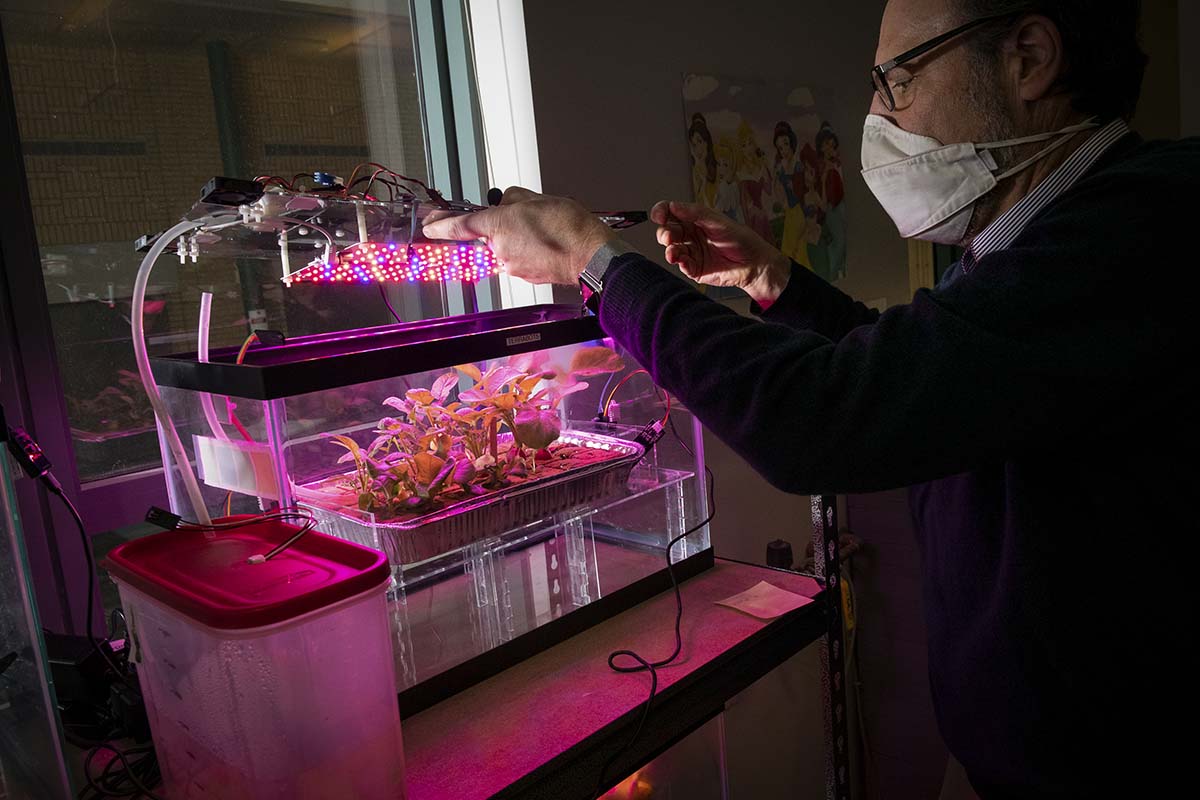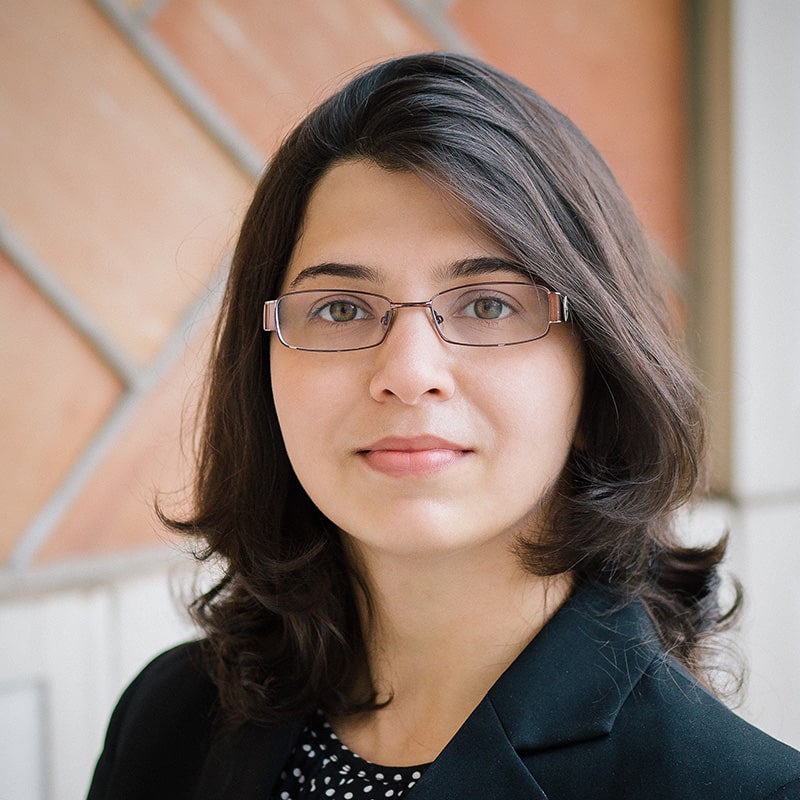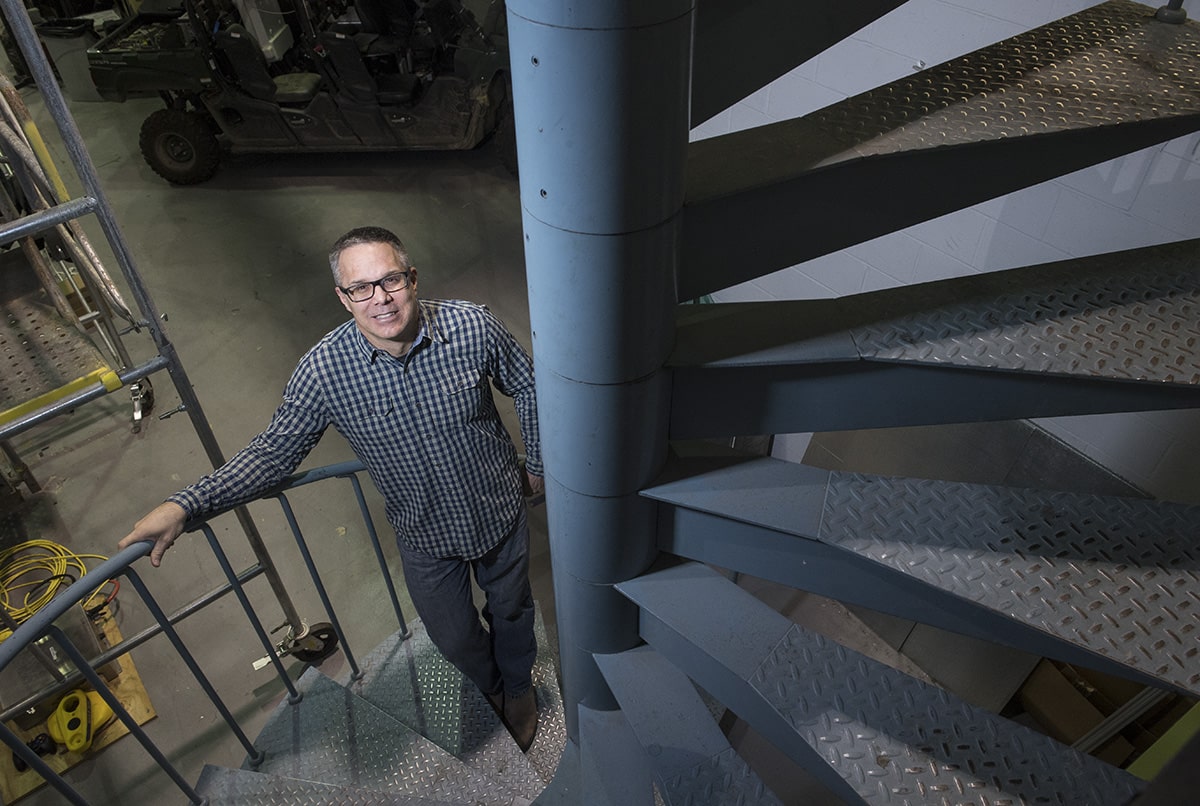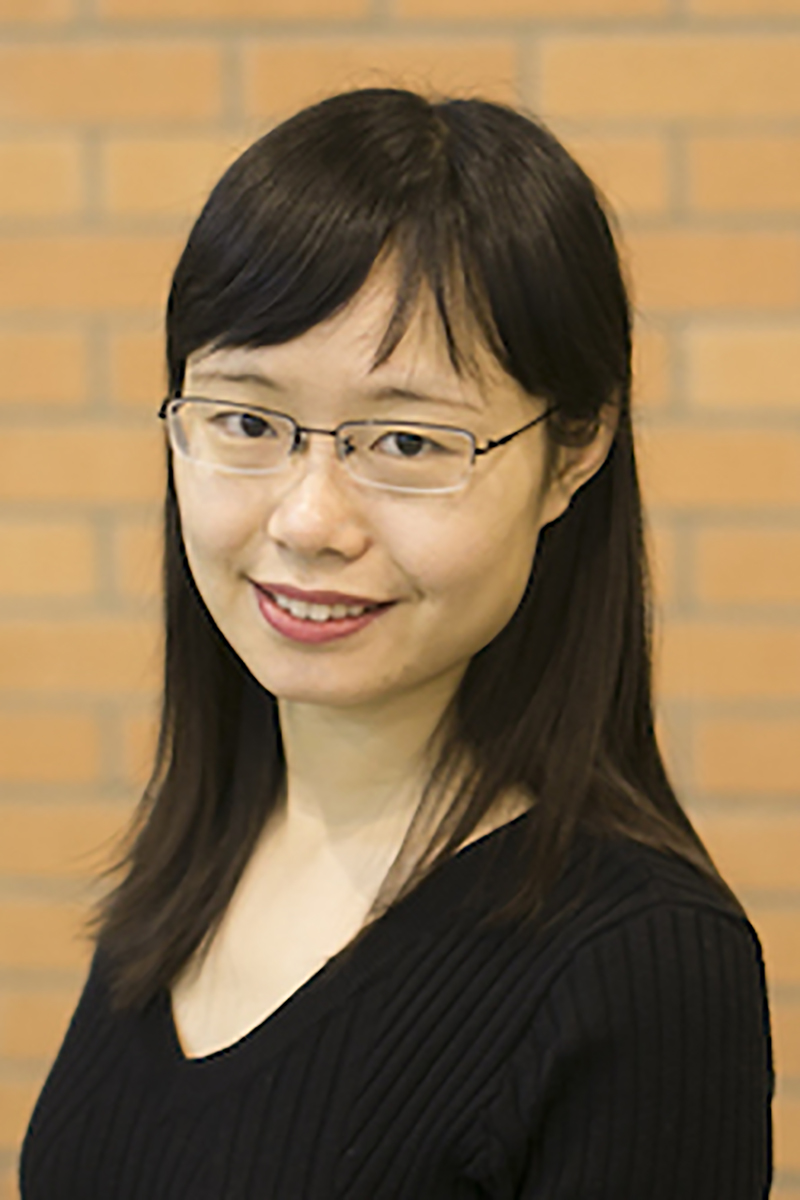From Carnegie Mellon University (US)
July 30, 2021
Aaron Aupperlee
aaupperlee@cmu.edu
Krista Burns
kristab@cmu.edu

CMU Puts AI To Work in New NSF-funded Institutes. Credit: CMU.
CMU’s contribution to the AI Institute for Resilient Agriculture will stem from the university’s previous work on robotics and farming.
Carnegie Mellon University researchers will contribute to four of the 11 new National Artificial Intelligence Research Institutes announced today by the National Science Foundation (US). Focused on AI-based technologies, these new institutes, which will each receive $20 million in funding over five years, will advance technology in fields ranging from agriculture to wireless networks.
The wide reach of these institutes illustrates the role AI will play in the next wave of transformational innovation and as a tool for improving daily life. CMU’s inclusion in these efforts to expand the use of AI underscores the university’s depth and breadth of expertise in the field, spanning deep learning, robotics, interaction, ethics and engineering. The university is one of the birthplaces of AI and continues to push its boundaries.
The wide reach of these institutes illustrates the role AI will play in the next wave of transformational innovation and as a tool for improving daily life. CMU’s inclusion in these efforts to expand the use of AI underscores the university’s depth and breadth of expertise in the field, spanning deep learning, robotics, interaction, ethics and engineering. The university is one of the birthplaces of AI and continues to push its boundaries.
AI-CARING
Reid Simmons, a research professor in the Robotics Institute (RI) and the Computer Science Department (CSD), will lead CMU’s involvement in the AI Institute for Collaborative Assistance and Responsive Interaction for Networked Groups (AI-CARING), which seeks to develop AI systems for caregiving environments.
AI-CARING will be led by the Georgia Institute of Technology with partial funding from Amazon and Google. The institute will initially focus on assisting in the care of the elderly by seeking to understand and manage the interaction between humans and AI agents. Researchers will develop methods to teach AI systems to learn a person’s needs, preferences and caregiving network, and enable the systems to adapt as those change over time. The tasks will involve not only coordinating a variety of AI agents — like voice-controlled assistants, smart devices or chatbots — but also managing human caregivers ranging from medical and assistance providers to family.

Reid Simmons will lead CMU researchers contributing to AI-CARING, which seeks to develop AI systems for caregiving environments. Pictured here, Simmons, who co-taught a course that applied AI knowledge to grow vegetables, opens an autonomous greenhouse.
“What we’re trying to do is collaborate. We’re not replacing caregivers; we’re augmenting their capabilities,” Simmons said. “The AI has to adapt to the individual and even more so, it has to adapt to the network the individual is in. We’re intending that the AI is going to be assisting people over a long time, and while there will be plenty of time for the system to learn, there will also be plenty to learn.”
The CMU team consists of about a dozen faculty members spanning RI, CSD, the Human-Computer Interaction Institute, Dietrich College of Humanities and Social Sciences and Tepper School of Business. The team includes Henny Admoni, who researches nonverbal human-robot interaction; Jodi Forlizzi and her work in human-AI interaction; Aaron Steinfeld, who works on assistive technology; Dave Touretzky and his work in teaching AI to K-12 students; Alex London, a professor of ethics and philosophy in Dietrich; and Tepper’s Anita Williams Woolley, who studies human-AI teaming and collaboration.
The institute’s CMU ties even extend to its director, Sonia Chernova. She earned her Ph.D. in computer science from CMU and now heads the Robot Autonomy and Interactive Learning Lab at Georgia Institute of Technology (US).
AI-EDGE

Gauri Joshi, who was awarded a CAREER award by the NSF, will lead CMU researchers working with AI-EDGE, developing new AI tools and techniques for edge networks.
Gauri Joshi, assistant professor of electrical and computer engineering, will manage a team of CMU researchers, including Ameet Talwalkar, assistant professor in CMU’s Machine Learning Department, for the AI Institute for Future Edge Networks and Distributed Intelligence (AI-EDGE). AI-EDGE is led by The Ohio State University (US) and partially funded by the Department of Homeland Security (US).
“The overarching research mission of the AI-EDGE Institute will be to design next-generation intelligent edge networks that are efficient, reliable, robust and secure,” says Joshi. “The focus will be on edge networks that consist of diverse components including mobile phones, sensors, robots, self-driving cars that are connected to backhaul networks, and data centers.”
AI-EDGE will develop new AI tools and techniques to ensure that wireless edge networks are self-healing and self-optimized. These networks will make AI more efficient, interactive and privacy-preserving for applications in sectors such as intelligent transportation, remote health care, distributed robotics and smart aerospace.
CMU is a globally recognized leader in machine learning, artificial intelligence and networked computing systems. The confluence of these areas puts the team in a unique position to make a lasting impact on next-generation AI edge networks. Joshi and Talwalkar are leaders in the emerging field of federated learning, a framework that trains machine learning models using data collected by edge devices.
AI-EDGE will create a research, education, knowledge transfer and workforce development environment that will help establish U.S. leadership in next-generation edge networks and distributed AI for many decades to come.
AIIRA
George Kantor, a research professor in RI, will lead CMU’s work in the USDA-NIFA AI Institute for Resilient Agriculture (AIIRA), which is focused on AI and robotics in agriculture.
AIIRA will be led by The Iowa State University (US) and is funded by the Department of Agriculture (US)‘s National Institute of Food and Agriculture. The institute aims to use AI to develop digital twins to simulate and predict how a crop will perform in climate scenarios that do not yet exist. It will also enable education and workforce development through formal and informal educational activities and drive knowledge transfer through partnerships with industry, producers, and federal and state agencies.

George Kantor will lead CMU’s work with AIIRA, which will develop AI for agricultural purposes.
“Imagine a robotic manipulator pushing on a branch. We can record how much force was used to make the branch move and how much the branch moved. Fusing that with other data will help us create a predictive model,” Kantor said. “This is going to be a big opportunity to bring intelligent manipulation into the field.”
Seven faculty members from RI and the Machine Learning Department make up CMU’s contribution to the institute. The challenge for the CMU team is, in part, designing the never-before-used robotic tools that will be required in the field. A robotic manipulator that will interact with crops must be gentle to avoid damaging the plants, so CMU’s Nancy Pollard is designing soft manipulators for the project. She will use AI and video capture techniques from her Graphics Lab to build a hand optimized for the task, whether grabbing a leaf or pulling on a stem. Other CMU team members include Oliver Kroemer, who is designing techniques that will allow a robot to insert sensors into a plant’s stem and the ground; and Katia Sycara, who studies multi-agent systems and human-robot interaction. Other members of the team will tackle novel imaging techniques, machine learning for decision support, and field robotics.
While the initial work will focus on using robotics and AI to gather and process data, the tools and techniques developed for those tasks could translate to other work on the farm, such as pollinating flowers, which is done by hand in some instances.
AgAID

Wenzhen Yuan, an assistant professor in the Robotics Institute, will lead CMU’s contribution to the Institute for Agricultural AI for Transforming Workforce and Decision Support (AgAID). Both AIIRA and AgAID are focused on AI and robotics in agriculture.
AgAID will be led by Washington State University (US) and is also funded by the USDA-NIFA. The institute will integrate AI methods into agriculture operations for prediction, decision support and robotics-enabled agriculture to address complex agricultural challenges. The institute involves farmers, workers, managers and policy makers in the development of these solutions, as well as in AI training and education, which promotes equity by increasing the technological skill levels of the next-generation agricultural workforce.
Yuan, who heads the RoboTouch Lab at CMU, will bring her research on robotic tactile perception to the institute. Yuan has developed tactile sensors that enable a robot to determine the hardness of an object. She has used this previously in her lab to determine if tomatoes, avocadoes and mangos are ripe but imagines it employed by robots in the field.
“Robots can touch the corn or other fruits and determine if they are ripe or not,” Yuan said. “I’m excited to take this technology out of the lab and into the field.”
See the full article here .
five-ways-keep-your-child-safe-school-shootings
Please help promote STEM in your local schools.
Carnegie Mellon University (US) is a global research university with more than 12,000 students, 95,000 alumni, and 5,000 faculty and staff.
CMU has been a birthplace of innovation since its founding in 1900.
Today, we are a global leader bringing groundbreaking ideas to market and creating successful startup businesses.
Our award-winning faculty members are renowned for working closely with students to solve major scientific, technological and societal challenges. We put a strong emphasis on creating things—from art to robots. Our students are recruited by some of the world’s most innovative companies.
We have campuses in Pittsburgh, Qatar and Silicon Valley, and degree-granting programs around the world, including Africa, Asia, Australia, Europe and Latin America.
The university was established by Andrew Carnegie as the Carnegie Technical Schools, the university became the Carnegie Institute of Technology in 1912 and began granting four-year degrees. In 1967, the Carnegie Institute of Technology merged with the Mellon Institute of Industrial Research, formerly a part of the University of Pittsburgh. Since then, the university has operated as a single institution.
The university has seven colleges and independent schools, including the College of Engineering, College of Fine Arts, Dietrich College of Humanities and Social Sciences, Mellon College of Science, Tepper School of Business, Heinz College of Information Systems and Public Policy, and the School of Computer Science. The university has its main campus located 3 miles (5 km) from Downtown Pittsburgh, and the university also has over a dozen degree-granting locations in six continents, including degree-granting campuses in Qatar and Silicon Valley.
Past and present faculty and alumni include 20 Nobel Prize laureates, 13 Turing Award winners, 23 Members of the American Academy of Arts and Sciences (US), 22 Fellows of the American Association for the Advancement of Science (US), 79 Members of the National Academies, 124 Emmy Award winners, 47 Tony Award laureates, and 10 Academy Award winners. Carnegie Mellon enrolls 14,799 students from 117 countries and employs 1,400 faculty members.
Research
Carnegie Mellon University is classified among “R1: Doctoral Universities – Very High Research Activity”. For the 2006 fiscal year, the university spent $315 million on research. The primary recipients of this funding were the School of Computer Science ($100.3 million), the Software Engineering Institute ($71.7 million), the College of Engineering ($48.5 million), and the Mellon College of Science ($47.7 million). The research money comes largely from federal sources, with a federal investment of $277.6 million. The federal agencies that invest the most money are the National Science Foundation (US) and the Department of Defense (US), which contribute 26% and 23.4% of the total university research budget respectively.
The recognition of Carnegie Mellon as one of the best research facilities in the nation has a long history—as early as the 1987 Federal budget Carnegie Mellon University was ranked as third in the amount of research dollars with $41.5 million, with only Massachusetts Institute of Technology (US) and Johns Hopkins University (US) receiving more research funds from the Department of Defense.
The Pittsburgh Supercomputing Center (PSC) (US) is a joint effort between Carnegie Mellon, University of Pittsburgh (US), and Westinghouse Electric Company. Pittsburgh Supercomputing Center was founded in 1986 by its two scientific directors, Dr. Ralph Roskies of the University of Pittsburgh and Dr. Michael Levine of Carnegie Mellon. Pittsburgh Supercomputing Center is a leading partner in the TeraGrid, the National Science Foundation’s cyberinfrastructure program.
Scarab lunar rover is being developed by the RI.
The Robotics Institute (RI) is a division of the School of Computer Science and considered to be one of the leading centers of robotics research in the world. The Field Robotics Center (FRC) has developed a number of significant robots, including Sandstorm and H1ghlander, which finished second and third in the DARPA Grand Challenge, and Boss, which won the DARPA Urban Challenge. The Robotics Institute has partnered with a spinoff company, Astrobotic Technology Inc., to land a CMU robot on the moon by 2016 in pursuit of the Google Lunar XPrize. The robot, known as Andy, is designed to explore lunar pits, which might include entrances to caves. The RI is primarily sited at Carnegie Mellon’s main campus in Newell-Simon hall.
The Software Engineering Institute (SEI) is a federally funded research and development center sponsored by the U.S. Department of Defense and operated by Carnegie Mellon, with offices in Pittsburgh, Pennsylvania, USA; Arlington, Virginia, and Frankfurt, Germany. The SEI publishes books on software engineering for industry, government and military applications and practices. The organization is known for its Capability Maturity Model (CMM) and Capability Maturity Model Integration (CMMI), which identify essential elements of effective system and software engineering processes and can be used to rate the level of an organization’s capability for producing quality systems. The SEI is also the home of CERT/CC, the federally funded computer security organization. The CERT Program’s primary goals are to ensure that appropriate technology and systems management practices are used to resist attacks on networked systems and to limit damage and ensure continuity of critical services subsequent to attacks, accidents, or failures.
The Human–Computer Interaction Institute (HCII) is a division of the School of Computer Science and is considered one of the leading centers of human–computer interaction research, integrating computer science, design, social science, and learning science. Such interdisciplinary collaboration is the hallmark of research done throughout the university.
The Language Technologies Institute (LTI) is another unit of the School of Computer Science and is famous for being one of the leading research centers in the area of language technologies. The primary research focus of the institute is on machine translation, speech recognition, speech synthesis, information retrieval, parsing and information extraction. Until 1996, the institute existed as the Center for Machine Translation that was established in 1986. From 1996 onwards, it started awarding graduate degrees and the name was changed to Language Technologies Institute.
Carnegie Mellon is also home to the Carnegie School of management and economics. This intellectual school grew out of the Tepper School of Business in the 1950s and 1960s and focused on the intersection of behavioralism and management. Several management theories, most notably bounded rationality and the behavioral theory of the firm, were established by Carnegie School management scientists and economists.
Carnegie Mellon also develops cross-disciplinary and university-wide institutes and initiatives to take advantage of strengths in various colleges and departments and develop solutions in critical social and technical problems. To date, these have included the Cylab Security and Privacy Institute, the Wilton E. Scott Institute for Energy Innovation, the Neuroscience Institute (formerly known as BrainHub), the Simon Initiative, and the Disruptive Healthcare Technology Institute.
Carnegie Mellon has made a concerted effort to attract corporate research labs, offices, and partnerships to the Pittsburgh campus. Apple Inc., Intel, Google, Microsoft, Disney, Facebook, IBM, General Motors, Bombardier Inc., Yahoo!, Uber, Tata Consultancy Services, Ansys, Boeing, Robert Bosch GmbH, and the Rand Corporation have established a presence on or near campus. In collaboration with Intel, Carnegie Mellon has pioneered research into claytronics.


